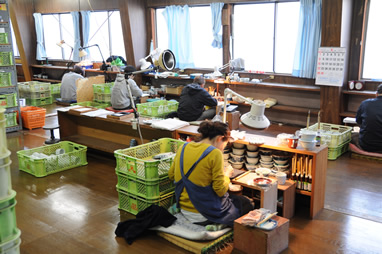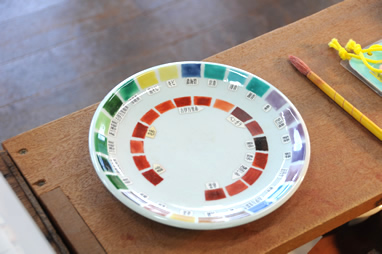
Porcelain production (Gen Emon Kiln)
Porcelain ware productions depend on the district and its nature. Moreover, kilns in a same district also have different characteristics which are their own specialty. We would like to introduce some characteristics below.

1. Stoned clay
Gen Emon Kiln deals with porcelain, using natural pottery stones from Amakusa area. Pottery stones are the raw materials for porcelains, and they use this in Amakusa pottery stones.
History shows us that stoned clay was discovered in 1616 at Izumiyama in Arita, which is thought to be the first origin of Arita wares. So Gen Emon Kiln used Izumiyama's stoned clay for the very first time. However, it was too dry and difficult to shape, and easily damaged (broke and cracks).
Since fine quality stones were discovered in the early 17th century at Amakusa located a mountain away from Izumiyama, and its amount was stable, they gradually shifted from Iumiyama to Amakusa.

2. Forming
Each pottery is formed by well-experienced artists, created on a wheel one-by one Eif we use a metaphor for human life, an unfinished, and moist pottery is an immature child and will turn into a sophisticated mature person by being planed with a canna. A lid-bawl is planed and adjusted so many times to make a balance for their perfect match since any little unbalance gap can make a difference for its proportion and touching feel. It is like a human framework. Creation by artists is like a charming face and a beautiful posture of design.
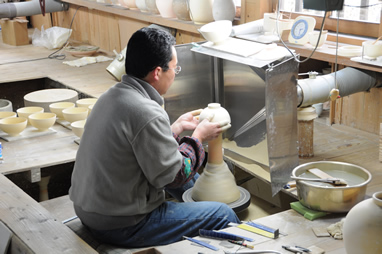
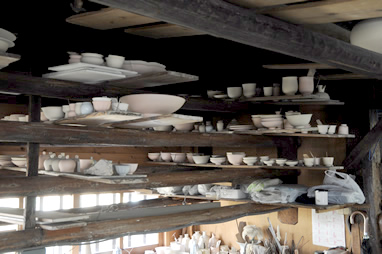
3. Coloring
The coloring figment called Gosu is mainly made of cobalt oxides, which turns blue after firing. It was imported from China at the very beginning, imitating Chinise wares having beautiful vivid colors. Gen Emon Kiln also has been importing it from China. However, they don't use it alone Ethey add some other ingredients for deeper and richer specialty. For example, putting an iron powder called Oniita enhances cobalt's original strength although it is just rough before refine.
A brush thickly holding Gosu dances on the pottery Erhythmical lines and one of the Gen Emon Kiln's biggest features, Dami. Dami is a very high level technique when they widely spread color, with a fist-size brush on the pottery, treating it like a dropper. This rhythmical Dami creates modern and friendly patterns.
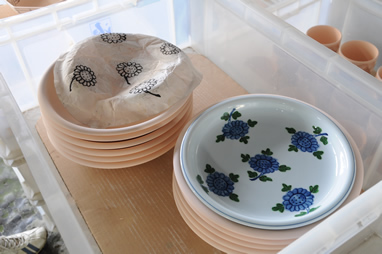
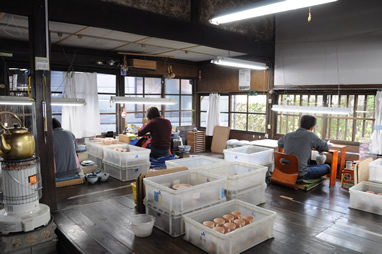
4. Glazing
Glaze is a vitreous covering on the pottery surface. Glaze could make a world of difference with white color on a base with Gosu. Of course, they specially mix ingredients here as well. They use natural ash since it makes white nobler and milder. Pottery pieces become stronger and more beautiful by being glazed. Well-experienced artists uniformly put exquisite thick glaze on their pottery. Their finger techniques on rims, speed to dip in glaze, and skills to make very little differences of glaze thickness Ethey are the skills that only experienced artists have, and look easy although it's very difficult.
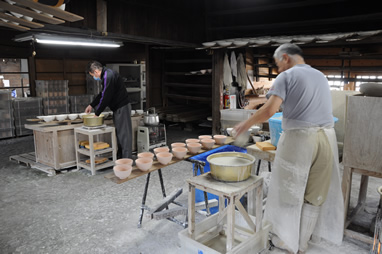
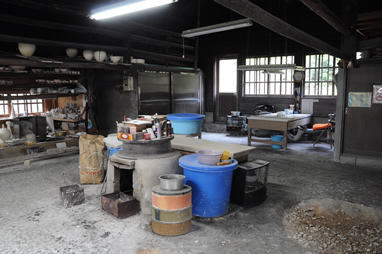
5. Firing
In Arita, very few kilns use firewood for this process, and it is called Honyaki. The highest temperature is 1300 degree. Electricity and gas kilns can be a replacement for the physical processes such as firing clay and melt glaze. However, porcelain ware after real fire and smoke has true admirability. Because it cannot be easily controlled like electricity and gas, and there is an attitude which contentiously strives for the finest art with a risk, Gen Eon Kiln's wares keep shining. All efforts can be fruit, and also end up nothing. That's Honyaki. Thousands of dewdrops cling on a kiln's ceiling as a product of blood, sweat, and tears.
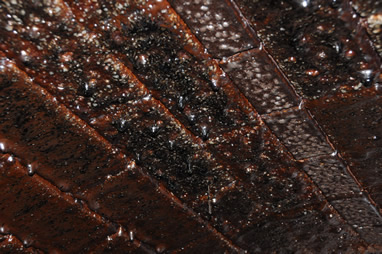
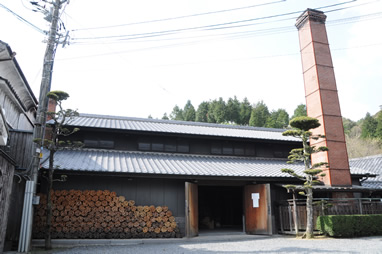
6. Dyeing
After firing, porcelian wares are decorated with pigments of yellow, green, purple, red, and gold on the glazed surface. This is the most significant process for Gen Emon Kiln works having liveliness and vividness. Every single color is put intentionally after deep, contentious study.
In the quietness and ultimate tense, Gen Emon Kiln porcelian ware is completed as a fruit breathed of new life after a long time work.
Such strong and untiring efforts led it to the collaboration work with Tiffany company.
